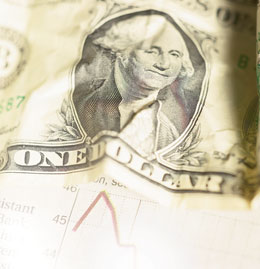 |
 |
 |
|
Special Section—PLUS 2006 Doomed to fail Like a contagious disease, bankrupt corporations create liability for virtually every firm and person they touch By Phil Zinkewicz Just about a quarter century ago, a scandal ripped through the insurance industry and sent shock waves through the investment community. It involved a life insurance company based in California called Equity Funding. The facts surrounding the Equity Funding scandal read like a low-budget movie plot and, in fact, there was a television movie based on the debacle. What happened was this. It was a time when life insurance companies in general were not performing well and life insurance company stocks were on the decline. The man who headed Equity Funding was a stern taskmaster. He let it be known that he was not happy with the drop in the company’s earnings and that something needed to be done. Upper management got the message. Those in high executive positions began to improve the company’s performance on paper by “creating” new business. They wrote policies on nonexistent insureds, making it appear that Equity Funding’s sales were going up while other life insurance companies’ sales were doing down. They even made up medical histories for these fictitious insureds and purchased complicated reinsurance treaties. To keep the illusion going, they were forced to “kill off” some of the insureds to establish a reasonable claims pattern. For a time, Equity Funding’s stock soared, and stockbrokers were touting it as a “must buy.” Then, of course, the much-too-inflated balloon burst when a disgruntled ex-employee tipped off an investment analyst. A great many people lost a good deal of money by investing in Equity Funding, and the scandal’s impact was felt by policyholders and throughout the investment arena. Corporate directors and officers also paid dearly for the actions of just a few miscreants. Today’s Equity Funding is Enron. The Enron story has dominated the news media for a long time now, and it is likely to continue doing so in the future. And why not? Enron is also the stuff that movies are made of. A bankrupt company, with investors suffering large losses and employees watching their hard-earned pensions disappear like “Brigadoon” touches upon the tragic. However, in today’s society, which is a good deal more litigious than 25 years ago, it probably will not be only the corporate directors and officers who will pay the price. This year’s PLUS conference will feature a panel discussion on corporate bankruptcy. Titled “Risk & Rewards of Bankrupt Companies—A Look at Underwriting Considerations and Professional Liability Claims Resulting from Bankruptcy,” the panel will be moderated by David S. Sheiffer, partner and chair of the D&O Practice Group of Wilson Elser Moskowitz Edelman & Dicker, LLP. Panelists will include: Michael Early, assistant general counsel, Chicago Underwriting Group, Inc., Chicago; Jack Flug, managing director, Beecher Carlson, New York; Tracy Forsyth, senior vice president/claims manager, AXIS Professional Lines, Berkeley Heights, New Jersey; Leonard P. Goldberger, shareholder, Stevens & Lee, P.C., Philadelphia; and Douglas Poetzsch, senior vice president/head of specialty claims, ACE USA, New York. “Financially distressed corporations pose unique underwriting concerns, not just for directors and officers coverage, but for fiduciary coverage as well,” says Sheiffer. “Additionally, those professionals that do business with insolvent corporations, such as their lawyers, accountants and even insurance brokers, face enhanced risks today when counseling distressed corporations. Perhaps best exemplifying this ‘merger’ of professional liability E&O exposures has been the Enron and WorldCom insolvencies.” Sheiffer says his panel will focus on the critical underwriting risks posed by distressed companies as well as the “clash” of claims that typically result from a bankruptcy, such as D&O liabilities to creditors, investors and others. “Also affected by corporate bankruptcy are ERISA fiduciary claims concerning retirement plans, financial institutions, both for securities and lender liability, as well as those against lawyers and accountants. We will also examine concerns for insurance brokers, both in obtaining coverage for insolvent corporate clients, and later as claim advocates. Overall, the panel will track insolvency risks from placement to resulting claims, the obligations of a broker as well as those against lawyers and accountants.” Sheiffer says that, in today’s climate, when a company goes bankrupt and a class action is filed, plaintiffs’ attorneys look for who may be responsible in addition to the corporation’s directors and officers. “The bankruptcy has a tendency to radiate, touching a host of people who were in any way involved in business dealings with the corporation, whether those dealings played a role in the bankruptcy or not. At our panel, I will make some introductory remarks, and then ask the panelists to discuss the issues and respond to questions.” * Phil Zinkewicz is the author of the articles appearing on pages 82 through 95. He is an insurance journalist with 30-plus years’ experience covering the international insurance and reinsurance arenas. Phil was the insurance editor of the Journal of Commerce for a number of years, handling all of their domestic and international supplements. In addition, he regularly writes for a number of London publications. |
|
|||||||
| ||||||||

